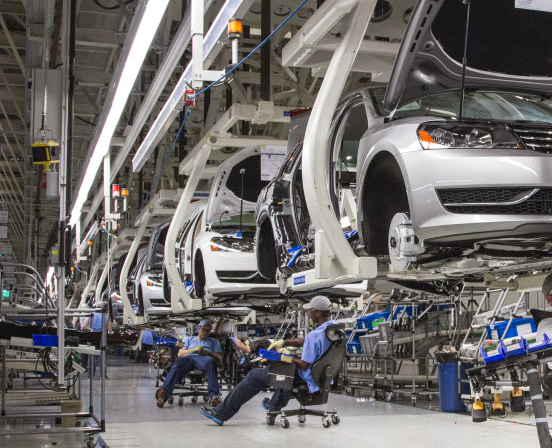Nissan is reportedly cutting approximately 10% of its global workforce, some 12,500 people. Ford may be in the process of cutting some 7,000 salaried workers by the end of August.
Compared to 2018, car sales in western Europe were down 3.5% in the first half of 2019. In China, passenger car sales were off 14% for the first half of 2019.
And in the United States things were better than either of those cases, but there was still a 2% decline for the first half of the year. Were it not for the U.S. consumers’ seemingly insatiable appetite for pickup trucks and crossovers of all sizes, that number would have been certainly higher.
Globally there is a consensus that things are slowing economically and that the auto industry is likely to see so-so sales for the next few years. With all that as prologue, you might imagine that global OEMs are planning to reduce their global footprints.
However, according to May Arthapan, director of Asia Pacific Forecasting for LMC Automotive, a global analysis firm, the OEMs are building more factories.
Yes, factories are being closed. But according to Arthapan, there will be 36 new plants added to the global automotive manufacturing base: 14 plants will be closed in 2019, 50 will be opened.
And it gets even more puzzling, as Arthapan writes, “While we are expecting a loss of 2 million in global Light Vehicle build in 2019, 3.6 million units of new capacity will be added, on top of the existing 45 million units of idle capacity, or 34% of the total.” That’s right: there is a whole lot of production capacity that isn’t being used right now, yet more capacity is being added.
Not surprisingly, a lot of new capacity is being put into China. According to Arthapan, during the past three years the Chinese market has contracted by 1% yet the production capacity has increased by 6%.
The capacity being added in China is not wholly predicated on indigenous brands. Arthapan’s data show that VW Group and Hyundai Group are putting a considerable amount of manufacturing investment in China.
Yet the U.S. is also going to be getting additional capacity between now and 2026, some 1.3 million units.
There is a $1.6 billion investment being made in Huntsville, Alabama to build the Mazda Toyota Manufacturing U.S.A. plant. The plant is to go online in 2021 for the production of SUVs for both brands.
FCA is taking two engine plants (Mack I and Mack II) in Detroit and transforming them, also with a spend of $1.6 billion, into a single car assembly plant, which will start building Jeeps by the end of 2020. Arguably, given what the the two engine plants were and what they are being transformed into, this is a whole new thing.
Going back to the importance of Jeeps and trucks to FCA, the company is also investing $900-million in its existing Detroit Jeep plant to build the new Grand Cherokee and Dodge Durango. This is a $1.5 billion spend at the FCA Warren, Michigan truck plant to provide capacity for the Jeep Wagoneer and Grand Wagoneer, while continuing production of the Ram 1500 Classic.
And VW, which plans to have the global capacity to have the ability to sell 1 million electric vehicles globally by 2025, which undoubtedly accounts for a considerable amount of the added capacity. Arthapan: “VW Group is at the forefront when it comes to investing in plant expansion, with 1.4 million units of new capacity in the pipeline between now and 2026”, is spending $800 million at its Chattanooga manufacturing complex to put EV production in the plant by 2022.
While there is nothing that says that there will not be more plant closings as there are more plant openings. Should sales continue to go south — or not go very far north — things may get concerning for auto workers.
As an OEM, turn to Sustained Quality for support. For a list of all of Sustained Quality services, click here.
Vasilash, Gary. (2019). “What do OEMs do in a global sales slump? Build more factories”. Retrieved from https://www.autoblog.com/2019/08/04/sales-slump-factory-capacity-expansion/.

